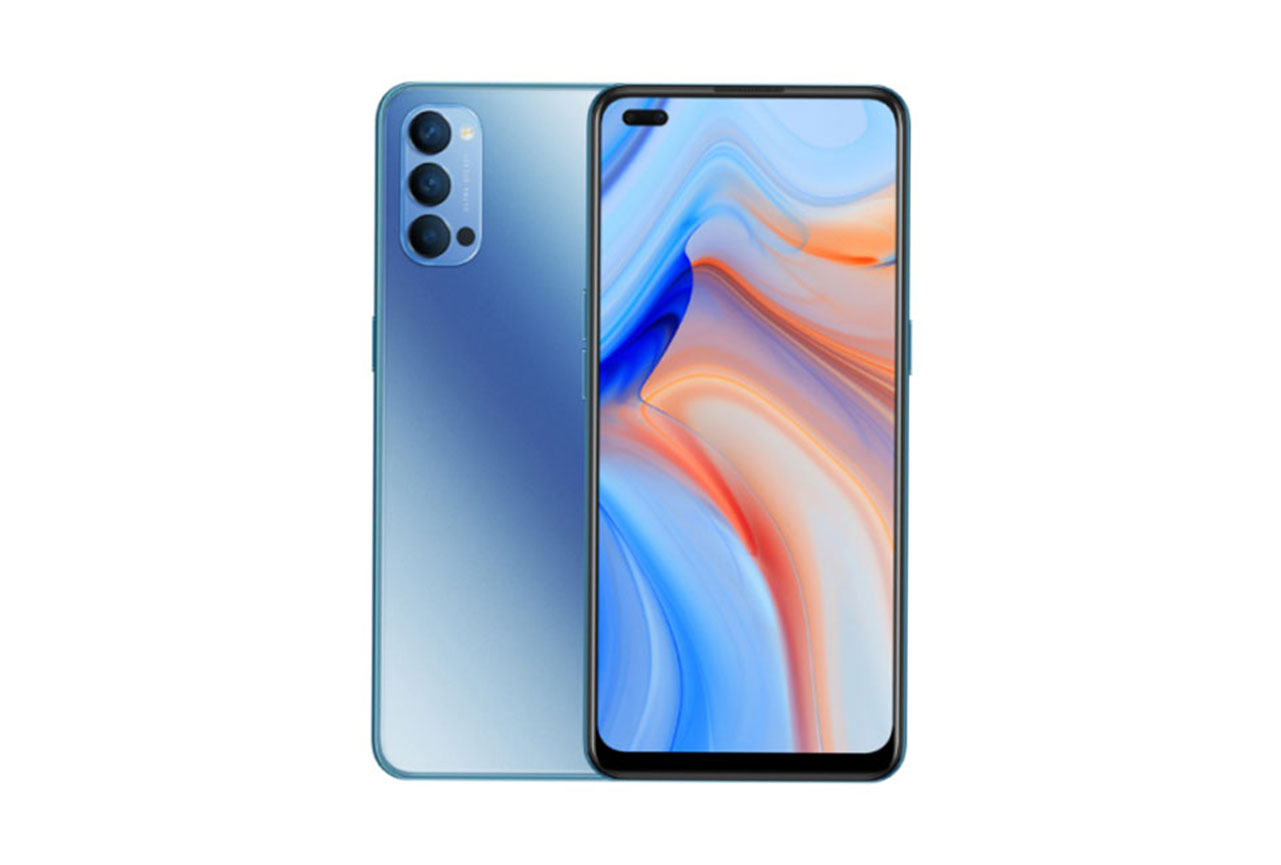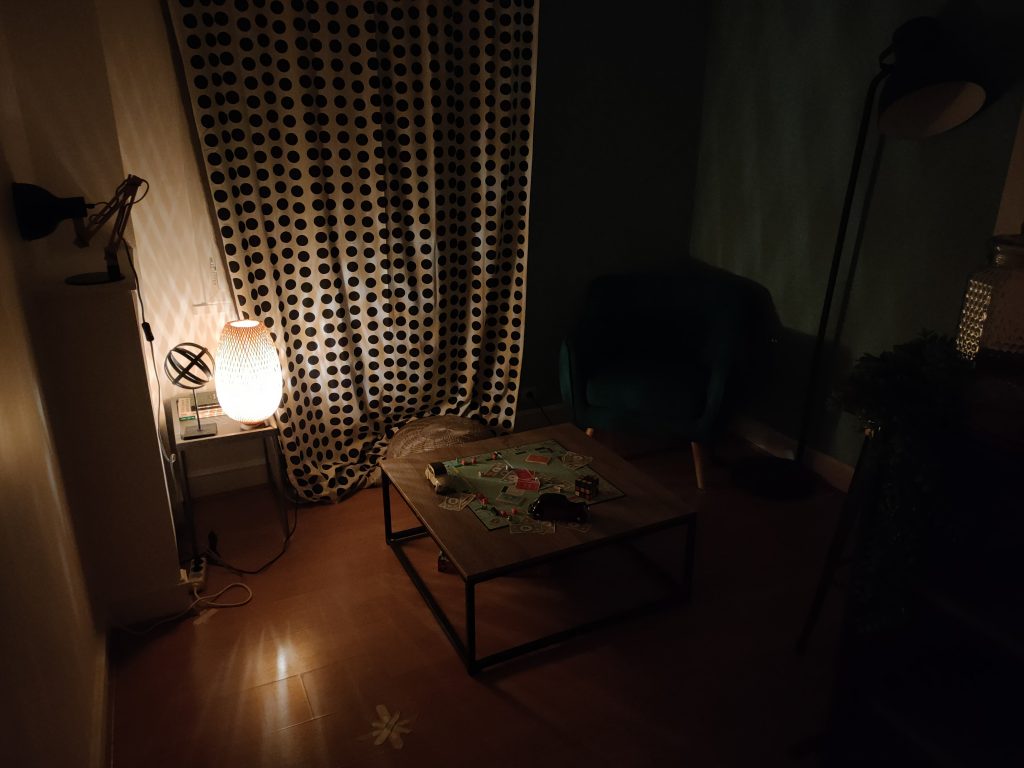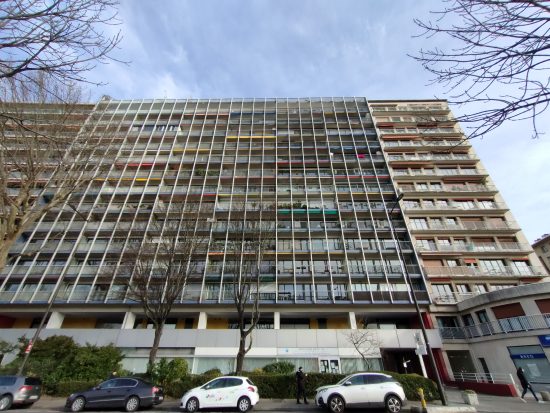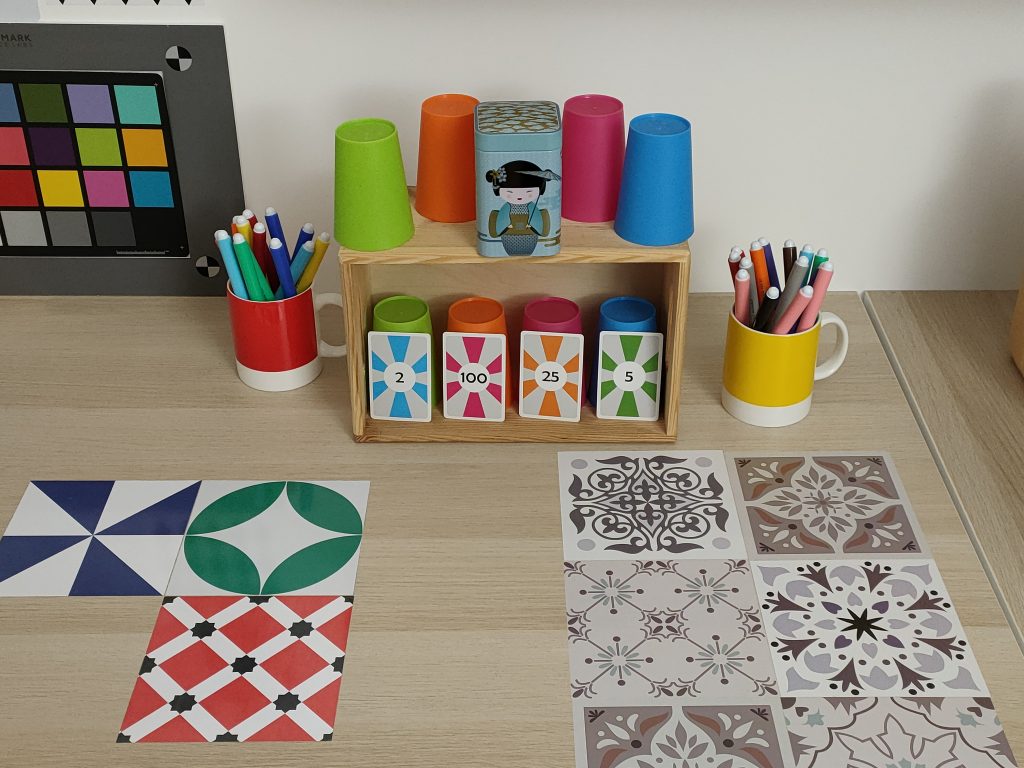Oppo Reno4 5G Camera review: Good bokeh and stabilization – DXOMARK
Launched June 2020, the Oppo Reno4 5G is a high-end smartphone featuring the Snapdragon 765G chipset with 8 GB RAM / 128 GB ROM, a large 6.4-inch FHD+ 60 Hz AMOLED display and a high-capacity 4020 mAh battery with fast 65W wired charging.
The Reno4 5G also boasts a triple rear camera, including a standard wide-angle main shooter, an ultra-wide second lens, and a dedicated depth sensor. This well-priced Oppo offering drops the tele-lens module that you’ll find on the Reno4 Pro 5G.
The main camera is built around a 48 MP Quad Bayer sensor that bins down to a final 12 MP output. A standard array 8 MP sensor is used on the ultra-wide camera, and a 2 MP monochrome depth sensor makes up the triplet. Both the standard wide and ultra-wide cameras offer laser detect autofocus (LDAF).
For video, the Oppo Reno4 5G records 4K footage at 2160p/30 fps, or faster 60 fps capture when dropping the resolution to FHD 1080p or HD 720p. Video features also include Oppo’s Ultra Steady video stabilization and Ultra Night video mode.
Read on to discover the DXOMARK Camera scores and image quality analysis for the Oppo Reno4 5G.
Key camera specifications:
- Standard-wide: 48 MP Quad Bayer sensor (12 MP output) with LDAF lens
- Ultra-wide: 8 MP sensor with LDAF lens
- Depth: 2 MP monochrome sensor
- Video: 2160p/30 fps, 1080p/30/60
- Video: Ultra Steady Video 3.0 & Ultra Night Video
About DXOMARK Camera tests: For scoring and analysis in our smartphone camera reviews, DXOMARK engineers capture and evaluate over 3000 test images and more than 2.5 hours of video both in controlled lab environments and in natural indoor and outdoor scenes, using the camera’s default settings. This article is designed to highlight the most important results of our testing. For more information about the DXOMARK Camera test protocol, click here. More details on how we score smartphone cameras are available here.
Mục lục bài viết
Test summary
Scoring
Sub-scores and attributes included in the calculations of the global score.

Oppo Reno4 5G
94
camera
90
photo
Exposure
95
117
Best: Honor Magic5 Pro (117)
Color
94
119
Google Pixel 7 Pro
Best: Google Pixel 7 Pro (119)
Autofocus
90
116
Best: Huawei Mate 50 Pro (116)
Texture
79
114
Best: Honor Magic5 Pro (114)
Noise
78
116
Best: Honor Magic5 Pro (116)
Artifacts
61
81
Best: Google Pixel 6 (81)
60
bokeh
Bokeh
60
80
Best: Honor Magic5 Pro (80)
50
preview
Preview
50
91
Best: Apple iPhone 14 Pro Max (91)
81
zoom
Tele
56
116
Best: Honor Magic4 Ultimate (116)
Wide
74
117
Best: Huawei Mate 50 Pro (117)
97
video
Exposure
75
115
Best: Apple iPhone 14 Pro Max (115)
Color
88
117
Best: Apple iPhone 14 Pro Max (117)
Autofocus
91
117
Best: Apple iPhone 14 Pro Max (117)
Texture
104
115
Best: Xiaomi Mi 11 Ultra (115)
Noise
84
118
Best: Samsung Galaxy A23 5G (118)
Artifacts
80
86
Best: Xiaomi 12S Ultra (86)
Stabilization
107
117
Best: Apple iPhone 14 Pro Max (117)
Use cases & Conditions
Use case scores indicate the product performance in specific situations. They are not included in the overall score calculations.
BEST 168
Top score
%s
Outdoor
Photos & videos shot in bright light conditions (≥1000 lux)
BEST 157
Top score
%s
Indoor
Photos & videos shot in good lighting conditions (≥100lux)
BEST 127
Top score
%s
Lowlight
Photos & videos shot in low lighting conditions (<100 lux)
BEST 143
Top score
%s
Friends & Family
Portrait and group photo & videos
Please be aware that beyond this point, we have not modified the initial test results. While data and products remain fully comparable, you might encounter mentions and references to the previous scores.

91
Position in Global Ranking
1. Honor Magic5 Pro
152
2. Huawei Mate 50 Pro
149
3. Google Pixel 7 Pro
147
3. Honor Magic4 Ultimate
147
5. Apple iPhone 14 Pro Max
146
5. Apple iPhone 14 Pro
146
7. Huawei P50 Pro
143
8. Apple iPhone 13 Pro Max
141
8. Apple iPhone 13 Pro
141
8. Xiaomi Mi 11 Ultra
141
11. Google Pixel 7
140
11. Samsung Galaxy S23 Ultra (Snapdragon)
140
11. Vivo X90 Pro+
140
14. Huawei Mate 40 Pro+
139
15. Vivo X80 Pro (Snapdragon)
137
16. Vivo X90 Pro
136
16. Xiaomi 12S Ultra
136
18. Huawei Mate 40 Pro
135
18. Samsung Galaxy S22 Ultra (Snapdragon)
135
18. Vivo X80 Pro (MediaTek)
135
21. Google Pixel 6 Pro
134
21. Vivo X70 Pro+
134
23. Apple iPhone 14 Plus
133
23. Apple iPhone 14
133
23. Samsung Galaxy S23 Plus (Snapdragon)
133
23. Samsung Galaxy S23 (Snapdragon)
133
27. Apple iPhone 12 Pro Max
131
27. Samsung Galaxy S22 Ultra (Exynos)
131
29. Oppo Find X5 Pro
130
30. Huawei P40 Pro
129
30. Xiaomi Mi 10 Ultra
129
30. Xiaomi 12T Pro
129
30. Xiaomi 12 Pro
129
34. Oppo Find X3 Pro
128
35. Apple iPhone 12 Pro
127
35. Asus Smartphone for Snapdragon Insiders
127
37. Google Pixel 6
126
37. Honor Magic4 Pro
126
37. Vivo X70 Pro (MediaTek)
126
37. Vivo X60 Pro+
126
41. Apple iPhone 13 mini
125
41. Apple iPhone 13
125
41. Samsung Galaxy S22+ (Exynos)
125
41. Vivo X50 Pro+
125
45. Samsung Galaxy Z Fold4
124
45. Xiaomi Mi 11 Pro
124
47. Apple iPhone 11 Pro Max
122
47. Google Pixel 6a
122
47. OnePlus 10 Pro
122
47. OnePlus 9 Pro
122
51. Samsung Galaxy Z Fold3 5G
120
51. Samsung Galaxy S22 (Exynos)
120
53. Sony Xperia 5 IV
119
54. Sony Xperia 1 IV
118
55. Apple iPhone 12
117
55. Apple iPhone 12 mini
117
55. Samsung Galaxy S21 Ultra 5G (Snapdragon)
117
55. Samsung Galaxy S21 FE 5G (Snapdragon)
117
55. Samsung Galaxy S21 5G (Snapdragon)
117
60. Apple iPhone 11
116
60. Asus Zenfone 8
116
60. Vivo X60 Pro 5G (Snapdragon)
116
63. Honor 70
115
63. Samsung Galaxy S21+ 5G (Snapdragon)
115
63. Samsung Galaxy S21 Ultra 5G (Exynos)
115
63. Xiaomi 12T
115
67. Nothing Phone(1)
114
67. OnePlus Nord 2T 5G
114
67. Oppo Reno8 Pro 5G
114
67. Oppo Find X5
114
71. OnePlus 8 Pro
113
71. Xiaomi 12
113
73. Oppo Reno8 5G
112
73. Samsung Galaxy Z Flip4
112
75. Samsung Galaxy Z Flip3 5G
111
75. Samsung Galaxy S21+ 5G (Exynos)
111
75. Samsung Galaxy S21 5G (Exynos)
111
78. Google Pixel 5
109
78. Xiaomi 12 Lite 5G
109
80. Vivo X60 Pro 5G (Exynos)
108
80. Xiaomi 11T Pro
108
82. Oppo Find X3 Neo
106
83. Sony Xperia 1 III
105
84. Huawei P40
102
85. Black Shark 5 Pro
101
85. Motorola Edge 30 Pro
101
87. Apple iPhone SE (2022)
100
87. Google Pixel 4a
100
89. ZTE Axon 30 Ultra
96
90. Oppo Find X5 Lite
95
91. Oppo Reno4 5G
94
92. Oppo A94 5G
93
92. Vivo X80 Lite 5G
93
94. Samsung Galaxy A72
92
95. Oppo Reno6 5G
89
96. Samsung Galaxy A52s 5G
88
96. Samsung Galaxy A52 5G
88
98. Samsung Galaxy A33 5G
85
99. OnePlus Nord CE 5G
84
100. Vivo Y76 5G
83
101. Samsung Galaxy A53 5G
79
102. Xiaomi Redmi Note 11 Pro 5G
78
103. Realme 9i 5G
75
104. Samsung Galaxy A23 5G
70
105. Fairphone 4
69
106. Motorola Moto G62 5G
66
107. Xiaomi Redmi Note 11S 5G
65
108. Oppo Reno8 Lite 5G
64
109. Sony Xperia 10 IV
63
110. Honor X7
61
110. Honor Magic4 Lite 5G
61
112. Xiaomi Redmi Note 11
60
113. Oppo A77 5G
53
114. Honor X8 5G
52
115. Xiaomi Redmi 10 2022
51
116. Crosscall Action-X5
50
117. Samsung Galaxy A22 5G
48
118. Crosscall Core-Z5
47
119. Oppo A57
46
119. Oppo A16s 5G
46

11
Position in High-End Ranking
1. Google Pixel 7
140
2. Google Pixel 6
126
3. Google Pixel 6a
122
4. Honor 70
115
4. Xiaomi 12T
115
6. Nothing Phone(1)
114
7. Oppo Reno8 5G
112
8. Xiaomi 12 Lite 5G
109
9. Apple iPhone SE (2022)
100
10. Oppo Find X5 Lite
95
11. Oppo Reno4 5G
94
12. Vivo X80 Lite 5G
93
13. Samsung Galaxy A72
92
14. Oppo Reno6 5G
89
15. Samsung Galaxy A52s 5G
88
15. Samsung Galaxy A52 5G
88
17. Samsung Galaxy A53 5G
79
18. Fairphone 4
69
19. Oppo Reno8 Lite 5G
64
20. Sony Xperia 10 IV
63
21. Crosscall Action-X5
50
Pros
- Photo contrast is pleasant in most images
- White balance is stable in most photos
- Good texture-to-noise balance in bokeh photos
- Accurate target exposure in most videos
- Effective video stabilization
- Well-controlled color shading in most videos
Cons
- Visible clipping in bright areas of most high dynamic range photos
- Noticeably inaccurate color rendering in many photos
- Low detail and high noise in nightscape photos
- Low detail and color fringing towards the corners in ultra-wide photos
- Poor detail at high zoom factors
- Visible autofocus instabilities, low target exposure, and strong noise in low-light videos
Achieving a DXOMARK Camera overall score of 105, the Oppo Reno4 5G is only 3 points adrift of the Reno4 Pro 5G at 108, with overall image quality comparable between the two.
With a Photo score of 104, the Reno4 5G boasts similar scores to the Pro in most areas. Slightly better texture on the Reno4 Pro 5G is the most notable difference between the two. Both models, however, showed weakness in night photography in our analysis. The standard Reno4 5G also puts in a reasonable performance in our Zoom analysis, where its score of 53 is again only a few points behind the Pro model, despite lacking a tele-lens.
Slightly improved autofocus and stabilization performance on the less expensive Reno4 5G also helped the device on its way to a fractionally higher Video score of 102, compared to 101 for the Reno4 Pro 5G.

Oppo Reno4 5G: The best shots outdoors display good exposure with pleasant contrast and accurate white balance.
Shots from the main camera display generally pleasant contrast and good target exposures in most conditions. The device scored well in our exposure measurements for indoor and outdoor scenes, but serious underexposure is evident in low-light scenes, similar to what we saw on the Pro model.

Oppo Reno4 5G, low light, underexposure

Oppo Reno4 Pro 5G, low light, underexposure
Dynamic range is also fairly limited, with both highlight and shadow clipping usually visible in outdoor images. In this comparison the Pro model captures a slightly brighter exposure but highlight and shadow clipping is evident in both images.

Oppo Reno4 5G, limited dynamic range

Oppo Reno4 Pro 5G, limited dynamic range
White balance is stable, so you get consistent results across consecutive images; and aside from slight color casts, Reno4 5G images have a generally neutral rendering. Color rendering is inaccurate in many examples, though, with oversaturated color to the point of hue shift being one of the device’s main weaknesses.
The laser-assisted autofocus is accurate and reliable, and although it is not the fastest we’ve tested, it put in a reasonably solid performance in our lab measurements. Focus speeds vary a bit under simulated HDR lighting conditions, but all shots were in sharp focus. Under perceptual analysis the depth of field is a little limited, however; further, focus often snaps to the second face in a group shot, resulting in the first plane being noticeably out of focus.

Oppo Reno4 5G, indoor scene, inaccurate color rendering

Oppo Reno4 pro 5G, indoor scene, improved color rendering

OnePlus 8 Pro, indoor scene, pleasant color rendering
The Reno4 5G’s refinement of texture is the most notable disadvantage in direct comparison with the Pro. In our perceptual analysis, we observed fairly low detail in all shots, with a visible loss of texture in outdoor scenes and disappointing results in low light. Noise is often present in outdoor conditions, too, with a significant increase in signal interference in lower light.
The texture-to-noise tradeoff is much better in bokeh photos, however, where facial details are well preserved and blurred backgrounds very smooth. Despite some issues in the shape and contrast of its spotlight, the fairly accurate depth estimation, a pleasant overall depth-of-field effect, and consistent performance make the Reno4 5G a good option for bokeh shots.
The same can’t be said for its night performance. Low detail and high noise in nightscapes, together with very limited dynamic range and noisy edges on night portraits using flash, resulted in one of the lowest scores we’ve recorded in this category. We also observed ghosting, loss of acutance, hue shift, and flare artifacts. The problems are most prevalent in indoor images, with significant ghosting or motion blur of moving elements and very unnatural color caused by hue shift in backlit HDR scenes.

Oppo Reno4 5G, night portrait with flash

Oppo Reno4 5G crop: low detail with slight motion blur

Oppo Reno4 5G, bokeh shots

Oppo Reno4 5G, crop: well-preserved facial detail and acceptable depth estimation
While an overall Zoom score of 53 again places the Reno4 5G in the second tier of our database, its performance isn’t far behind the Pro model with its better specs. Ultra-wide shots display nice exposure and color, but its field of view is limited compared to many competitors, and low sharpness with strong color fringing towards the corners are very obvious.
With no dedicated tele-lens to call on when zooming in, it’s best to stick to close-range shots on the Reno4 5G. It’s best in good light with a small amount of zoom, but push the magnification harder and low detail with strong ringing artifacts start to become a problem.

Oppo Reno4 5G, ultra-wide shot at 18 mm

Oppo Reno4 5G, crop: low detail and color fringing in the corners

Oppo Reno4 5G, close-range zoom (40 mm-equivalent)

Oppo Reno4 5G, crop: acceptable detail and noise
The Reno4 5G achieves a respectable Video score of 102, thanks to pretty good results in most lighting conditions. Target exposures are accurate in both indoor and outdoor videos, and overall its color rendering is better than for stills. Video autofocus performs well in good light, too, and its 4K video files retain plenty of detail in most recordings. But the exception is low-light video where very dark video scenes are extremely underexposed. Indoor video exposure improves a little, but coarse noise, autofocusing errors, and strong ghosting plague its video results until you find some brighter conditions.
We found the Reno4 5G’s video stabilization very effective overall, which is one of its key strengths for moving images. Unwanted motion effects are generally well controlled in both static and walking videos, although a noticeable difference in sharpness between frames is visible in lower light.
Oppo Reno4 5G, outdoor video: accurate target exposure with well-controlled noise and effective stabilization
Conclusion
Oppo’s expanding range of smartphones offers plenty of options for different budgets. Positioned towards the more affordable end of the spectrum, the standard Oppo Reno4 5G’s Snapdragon 765G chip, 6.4-inch screen, SuperVOOC charging, and triple camera look like a solid choice in the crowded mid-range space.
Its main and ultra-wide cameras deliver acceptable exposure with decent contrast in most images, stable white balance, and pleasing bokeh results. With no tele-lens, zoom shots at long distances can be less than ideal, so stick to just a little pinch zoom where you can. The Oppo Reno4 5G struggles in low-light situations in stills and videos.
Seek out brighter conditions, though, and the Oppo’s reliable autofocus, effective stabilization, and improved all-round performance should satisfy the casual smartphone snapper.
In the Press













